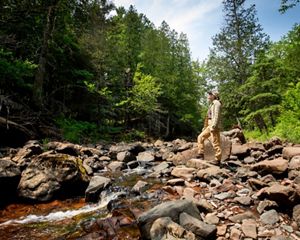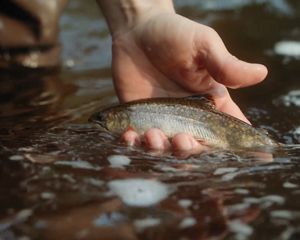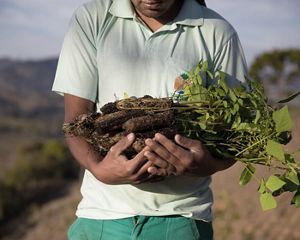
Checking seed Natalie Kim inspects collected seeds. © Katelyn Campbell/TNC
On a sunny September day, Natalie Kim at The Nature Conservancy in Minnesota, is crawling on their hands and knees beneath a red oak tree, picking up acorns off the ground and tossing them into a five-gallon bucket.
Natalie is excited to have found this tree in a park in Frontenac, Minnesota. Last year, there was a huge crop of acorns across the state. This year, not so much. But the ground around this tree is littered with seeds, and they continue to drop as Natalie collects them.

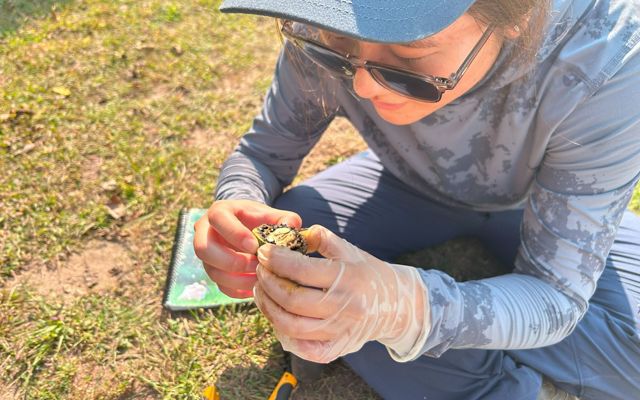
Acorns from oak trees are just one of the seeds our scouts hunt for in the fall. Black walnut, yellow birch and black cherry are all dropping seeds that can be used to power ambitious reforestation efforts throughout Minnesota.
The seed supply problem
A healthy Minnesota environment depends on healthy forests. Forests help provide clean water, rich biodiversity, wildlife habitat and reduce the effects of climate change.
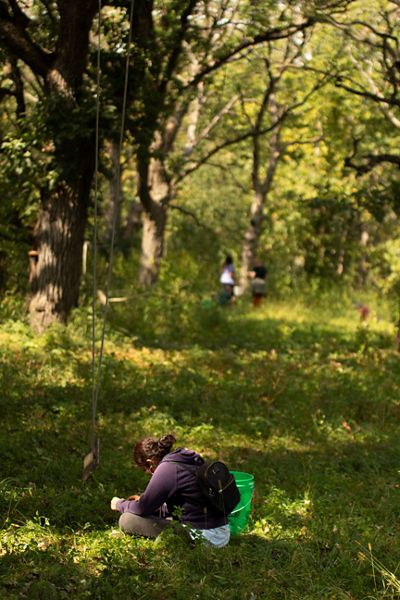
Unfortunately, we lost about 44% of Minnesota’s original forest from land clearing and logging in the 1870s to the 1930s, and forest loss continues through development and conversion to agriculture. That’s why The Nature Conservancy in Minnesota and our partners have an ambitious, collective goal to reforest a million acres in Minnesota. We can’t do that without a steady supply of tree seedlings. To get seedlings, we need seed. Lots and lots of seed.
Although seeds do grow on trees, we don’t collect enough yet to meet our goal. There’s a growing demand for seed with many different groups and agencies working to plant trees. But wildfires can quickly wipe out local tree populations and their seed banks, and there’s a limited number of seed orchards producing seed for reforestation. There’s also a limited number of seed collectors working to gather seed, and many are aging out of this work. Plus, seed collection is a laborious task that can require year-round planning and has a short window of time when seeds can be collected.
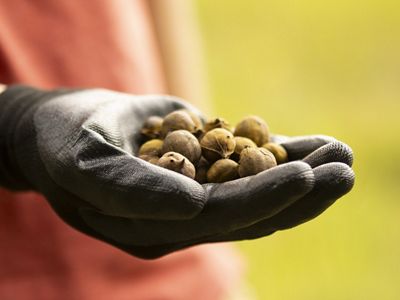
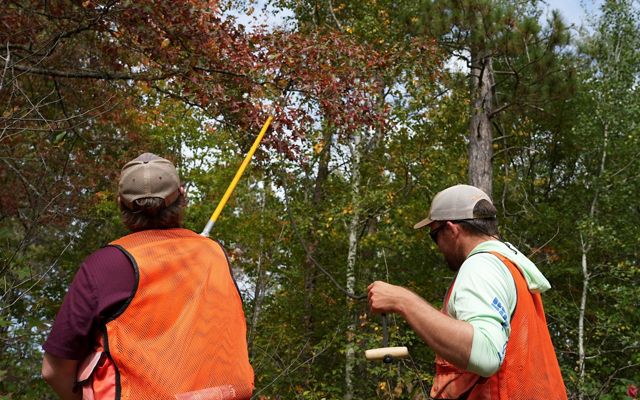
The Nature Conservancy and our partners are working to overcome these challenges by investing in seed collection and seedling production. We’re doing that by training seed collectors to revive the pipeline of workers who know how to properly collect seed. We’re tracking seeds throughout the supply chain to ensure genetic diversity of seedlings. And we’re supplying much of our own demand by collecting seeds that form the foundation of our tree planting efforts.
Natalie’s seed collection efforts are just one piece of our chapter’s work to enhance the seed supply. Our forest team in Duluth collaborates with partners like the Minnesota Department of Natural Resources and the U.S. Forest Service with support from guest workers to strategically collect tree seeds to meet 100% of our own demand for seedlings each year. In 2024, this team collected 8.2 million seeds.
Sign up for Nature News
Sign up to receive monthly conservation news and updates from Minnesota.

Scouting seed
Seed scouts like Natalie are doing the important work of collecting seeds. The work is year-round. A lot of planning goes into collection: the scouts must find a viable site where there are several trees of the desired species to ensure genetic diversity, they must get permission from the landowner or agency in charge of the site and they must find the right time to collect, when the seeds are ripe and beginning to fall, but before they become infested with bugs or eaten by wildlife.
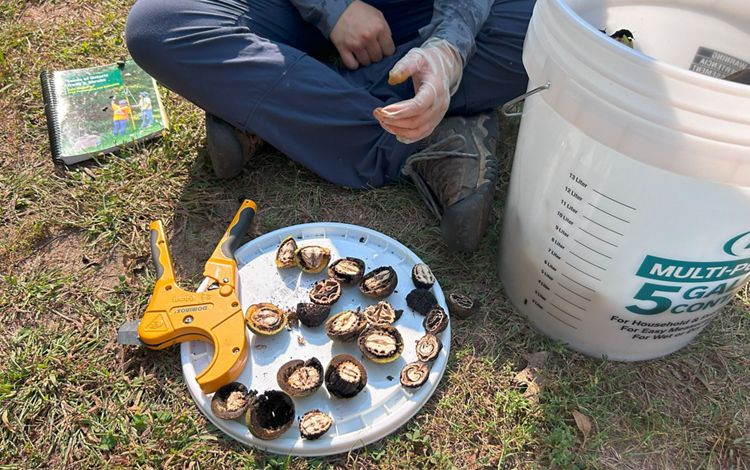
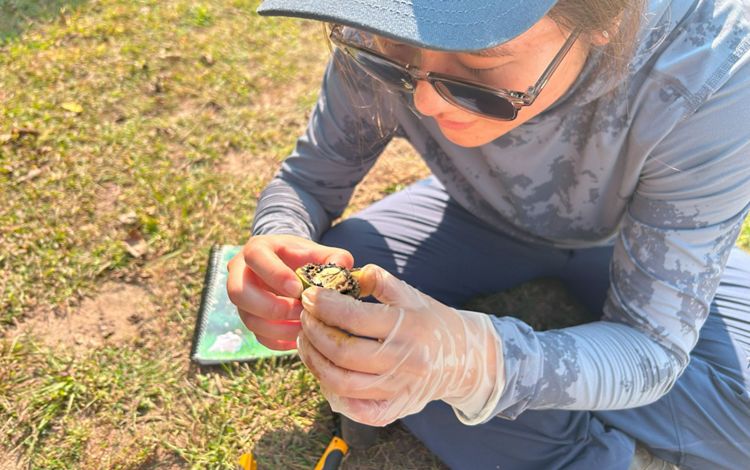
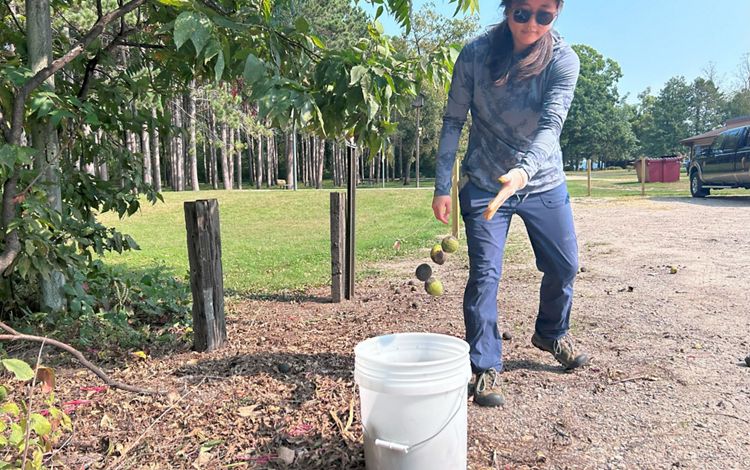
On this September day, Natalie has filled several coolers with acorns and black walnut seeds. Before collecting the seeds that were abundant beneath the parent trees, Natalie grabbed a few sample seeds to determine whether the crop was healthy and viable. They use a pipe cutter to cut the seeds in half, giving them a cross-sectional view that reveals any infestation. If most of the sample seeds appear healthy, they begin collecting.
Natalie doesn’t collect more than 10 percent of the seed crop to leave plenty behind for natural regeneration and feed for wildlife. It's not hard to do—at this park, there are countless seeds still up in the trees and more than they could possibly collect on the ground.
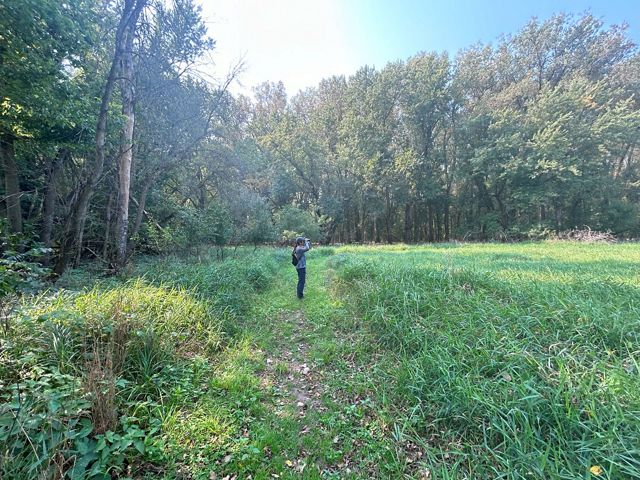
When Natalie’s bucket is full, they empty their collection into a paper bag that they label with the precise location where the seeds were collected. This helps with their team’s efforts to track the genetic source of the seedlings that will be produced and planted. They keep the collected seeds in a cooler and transfer them to a refrigerator to keep them alive until farmers can get them planted.

What’s next
The collected seeds are transferred to private and state-run nurseries for additional processing, labeling and storage. Some must be immediately sown, while others can be stored for years in the right conditions. Finally, seeds are sown by growers, on the way to becoming new forests. A portion of seed is distributed to researchers studying the growing process to monitor seed health and experiment with interventions, like introducing mycorrhizae, a fungus known to help plants receive water and nutrition.
The Nature Conservancy and our partners are also studying the market of tree seeds to better connect seeds and seedlings with where they are needed most and to create a more efficient supply chain. By improving the supply of tree seeds, we can help meet the demand for trees for reforestation and restore Minnesota’s forests.
